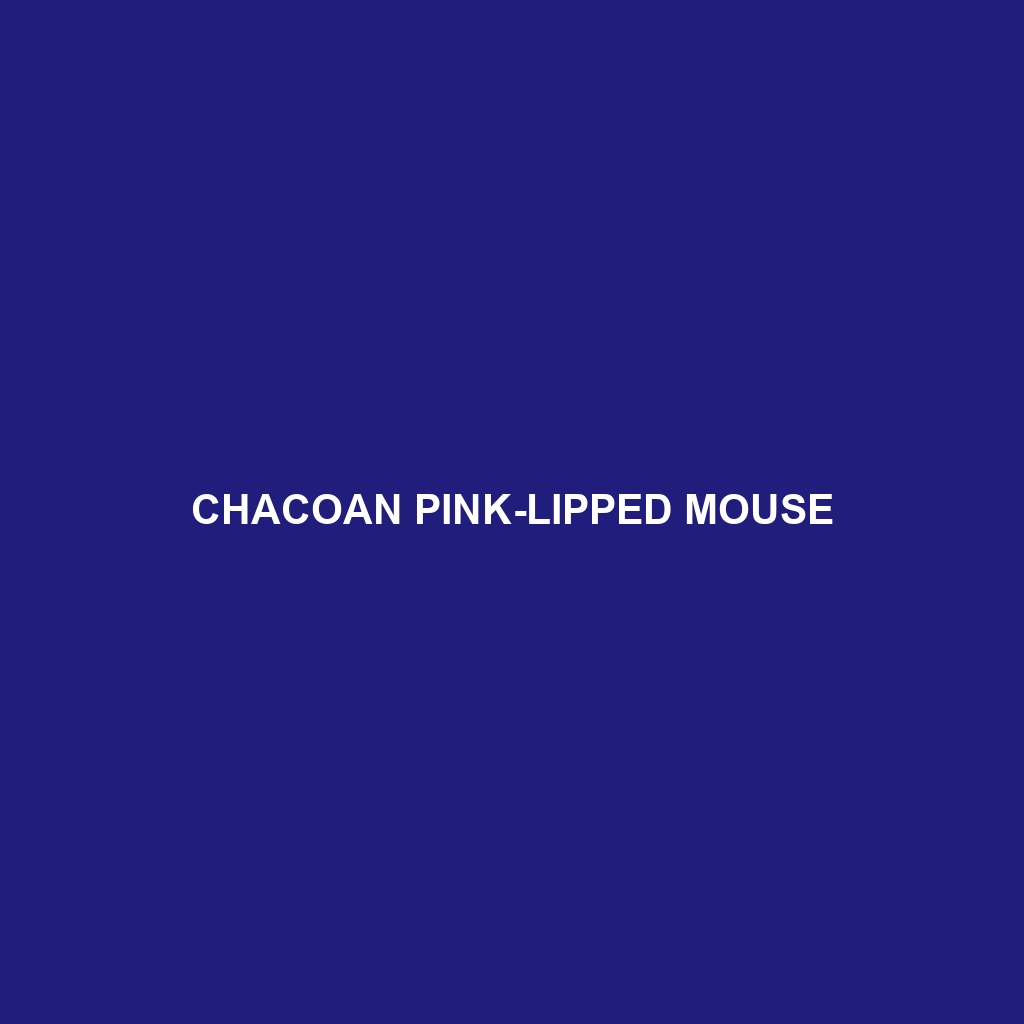Chacoan Pink-lipped Mouse
Common Name: Chacoan Pink-lipped Mouse
Scientific Name: Akodon iniscatus
Habitat
The Chacoan Pink-lipped Mouse is primarily found in the **Chaco region** of Argentina, particularly in the **dry forests** and **savannas** of the provinces of Formosa, Chaco, and northern Santa Fe. This species prefers habitats with grassland and shrubland, characterized by a warm climate and seasonal rainfall.
Physical Characteristics
The Chacoan Pink-lipped Mouse is a small rodent, typically measuring about 10 to 15 centimeters in body length, excluding the tail. Its fur is predominantly **light brown**, with a distinctive pink hue on its lips and underbelly. The **large ears** and **long tail** are notable features, making the mouse easily identifiable. The fur is dense and soft, providing insulation against the environment.
Behavior
This species exhibits primarily **nocturnal behavior**, being most active during the night when it forages for food. The Chacoan Pink-lipped Mouse is known for its **solitary nature**, although it can sometimes be found in small groups during feeding. Their agility allows them to evade predators effectively, and they often use burrows for shelter.
Diet
The diet of the Chacoan Pink-lipped Mouse mainly consists of **seeds**, **grains**, and **insects**. This omnivorous diet enables the mouse to thrive in its habitat, especially during the dry season when food sources are scarce. Their foraging habits include **hoarding food** in burrows, which aids in their survival during unfavorable conditions.
Reproduction
Breeding typically occurs in the warmer months, with a peak in the **spring**. Female Chacoan Pink-lipped Mice can have several litters per year, usually containing **2 to 5 offspring** each. The young are born blind and are weaned within a few weeks. Maternal care is crucial for the survival of the young, who remain dependent on their mother for a significant time.
Conservation Status
The Chacoan Pink-lipped Mouse is currently classified as **vulnerable** according to the IUCN. Habitat loss due to deforestation and agricultural expansion poses significant threats to its population. Conservation efforts are necessary to protect its natural habitat and ensure the species’ survival.
Interesting Facts
– The Chacoan Pink-lipped Mouse is named for its unique lip coloration, which is a rare feature among rodent species.
– This species has adapted well to its arid environment, displaying behaviors that minimize water loss, such as nocturnal foraging.
Role in Ecosystem
The Chacoan Pink-lipped Mouse plays a critical role in its ecosystem by aiding in **seed dispersal**, which contributes to the health of its habitat. As both prey and competitor, it interacts with various predator and herbivore species, thus maintaining ecological balance.
This format includes relevant keywords and is structured to enhance search engine visibility, while the content provides a comprehensive overview of the Chacoan Pink-lipped Mouse.
